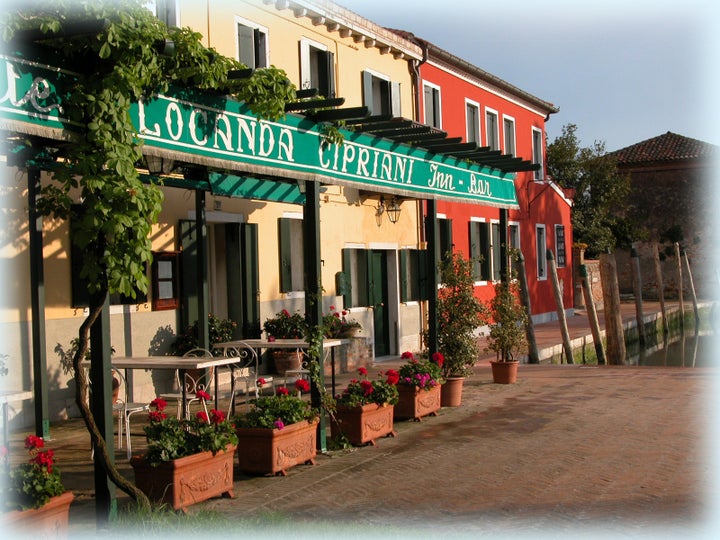
“It would be difficult to find a lovelier church nor one where the mosaics expressed more doubt...”
“Doubt” would have been the operative word for Ernest Hemingway. It was 1948 and although he was the most famous writer in the world, he was also in the midst of a creative drought, going on nine years since his previous novel, For Whom the Bell Tolls (1940), the great masterpiece about the Spanish Civil War.
In order to stoke his creative fire, Hemingway, age 49, revisited the site of his World War I wounding, northern Italy, which had provided material for some of his greatest short stories, as well as A Farewell to Arms (1929). In 1948 Italy was a few years removed from fascism and Italians had voted in their first democratic elections only months earlier. Barred under Mussolini, Hemingway’s work was finally allowed to be translated into Italian.
During a blustery November, Hemingway and his fourth wife Mary moved to a small inn, the Locanda Cipriani in Torcello, a small island in the northern part of the Venetian lagoon. This remote village has just a dozen or so citizens, and is renowned for Cipriani’s establishment and three buildings—the basilica, the church of Santa Fosca, and the baptistery—that are more than a thousand years old.
In the days during Hemingway’s stay in Torcello, he sketched an evocative ode to this beautiful village. Although some scholars were vaguely aware of this sketch, it has only recently been published in a book we have edited, Hemingway and Italy: Twenty-First Century Perspectives (University Press of Florida 2017).
This vignette is nothing short of a love letter to Italy and, especially, to Torcello.
Hemingway begins with a wink: “For we, who love the lagoon, it makes no difference if Attila sat in the chair or if he did not. I doubt if he did. It is enough for me that Cipriani sat in it.” Hemingway refers to Attila the Hun, who ransacked northern Italy during the fifth century. Outside the cathedral is a stone chair that is referred to as Attila’s Throne.
Putting Attila aside, Hemingway prefers to extol a new legend, Giuseppe Cipriani, the owner of the Locanda and of Harry’s Bar in Venice, to whom he would pay tribute in the novel that would emerge from these Venetian travels, Across the River and into the Trees (1950).

“Torcello Piece” goes on to praise the beauty of Torcello and its buildings and sacred monuments. He closes the fragment with a soaring devotional to Torcello in prose that is quintessentially Hemingwayesque:
But at night, with a fire of beachlogs burning almost to coals now, and you wake in the Locanda to hear the shots of the big punt gunners who are working up to the free ducks in the night, you go to the window and you can see, through the mist, with the moon aiding you, the great tower and the glory of the town, reduced to a village through the needs of Venice, and you feel both humble and proud.
In addition to demonstrating Hemingway’s love for his new temporary home, the sketch reveals a warm-up for Across the River and into the Trees, the novel he was preparing to write. In this novel, the protagonist, Colonel Richard Cantwell is praised as “a Torcello boy.” Elsewhere in the novel, Hemingway refers to the “squared tower of the church at Torcello,” the iconic cathedral dedicated to Santa Maria Assunta, dating from the seventh century.
Although Across the River and into the Trees has gained notoriety as Hemingway’s worst novel, even its detractors remark on Hemingway’s evident love for Italy, for Italians, and for its history. We are proud to publish “Torcello Piece” for the first time, to allow Hemingway to speak about it in his own voice, seventy years later.